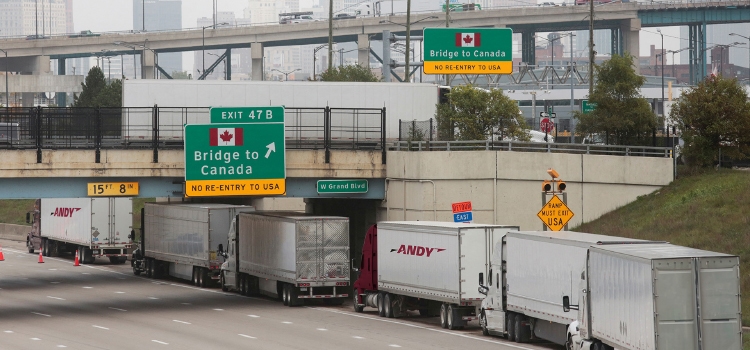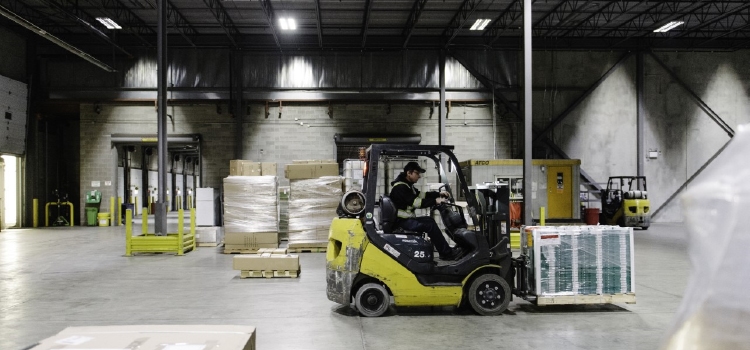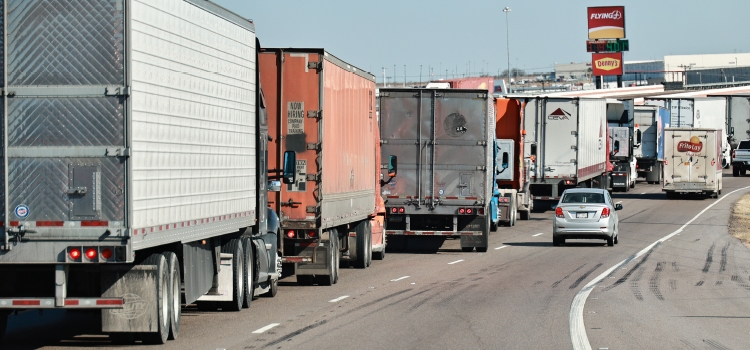North America: Navigating Cross-Border Trade

U.S.-based companies are looking to master cross-border trade in North America—amidst supply chain upheavals, rising production costs in many other parts of the world, and a strengthening initiative to produce closer to primary markets.
Together, the gross domestic product (GDP) of Canada, Mexico, and the United States tops $29 trillion, or about 29% of global GDP. The three countries are home to more than 500 million people. For the most part, the governments of these nations can work together productively.
So, it’s not surprising that Canada, Mexico, and the United States are among each other’s top trade partners. Canada and Mexico have been one of the top three merchandise export markets for 49 states in the United States, the U.S. Chamber of Commerce reports.
“Cross-border trade with respect to Mexico, the United States, and Canada is more relevant than it ever has been. We have a stable geopolitical environment, free trade, and half a billion people between the three countries,” says David Cox, chief executive officer of Polaris Transportation Group, a provider of less-than-truckload (LTL) service between Canada and the United States, and other services. Each of the countries also boasts an educated workforce, making cross-border trade even more efficient, Cox says.
The focus on business opportunities within North America has grown over the past few years. “After 2008, we saw a lot of companies open up shop across the world, but predominantly Asia,” says Andreea Crisan, president and chief executive officer with ANDY, a provider of transportation and supply chain solutions, based in St-Laurent, Quebec.
For example, annual foreign direct investment (FDI) into China grew from around $40 billion in 2000 to $124 billion in 2011, and then growth rates dropped. In 2022, FDI into China hit about $189 billion—a massive number, but up just 4.5% from the previous year.
Rising costs for shipping, labor, and other expenses, along with the push for sustainability, have prompted companies to consider a wider range of countries when locating operations. Many organizations based in North America are assessing opportunities closer to home.
“It’s a natural transition, given all that’s going on, to come back on to the North American continent,” says Crisan. It’s also good for the planet to manufacture closer to the market for a company’s products, cutting the distance items have to be transported, she adds.
A growing number of U.S. companies are turning to nearshoring, typically in Mexico, for greater visibility, shorter delivery times, and a greater ability to influence the quality of their products, says Jose Minarro, managing director with Sunset Transportation’s Cross-Border Operations.
Mexico’s proximity to the United States, its availability of skilled labor, competitive labor costs, favorable trade conditions, and tax exemptions make it attractive for manufacturing, he adds.
The shorter transportation times are especially significant for products that are seasonal and/or time sensitive, like fashion items, says Jerry Haar, professor of international business at Florida International University. In addition, by shifting some operations from other parts of the world to Mexico, companies diversify their supply chains, lowering risk, he adds.
Boosting Nearshoring Benefits
Trade agreements between Canada, Mexico, and the United States further boost the benefits of nearshoring and cross-border trade. The most prominent, the United States Mexico-Canada Agreement (USMCA) went into effect July 1, 2020, replacing the North American Free Trade Agreement (NAFTA). The USMCA contributes significantly to stability in rules and norms, reducing the risk to trading and investing across North America, Haar says.
The USMCA allows for a wide variety of duty-free items that can be exchanged among the United States and Mexico, Minarro says. An added benefit: Many manufacturing companies that set up shop in Mexico end up selling a portion of their production into the domestic market of approximately 130 million people, he says.
Surging Trade
“Since the inception of USMCA, trade throughout North America has experienced a surge, accompanied by a substantial uptick in investment within industries capitalizing on this opportunity,” says Rachel Honbarger, project manager with Tompkins Solutions, a provider of supply chain solutions.
In 2022, exports of U.S. goods with the USMCA were $680.8 billion, up 16% from 2021 and a 34% jump from 2012, according to the Office of the United States Trade Representative. Imports of goods through the USMCA also grew, rising 20.5% between 2021 and 2022, to total $891.3 billion.
Cross-border trade and nearshoring within North America offers companies based in Canada, Mexico, and the United States greater opportunity for profit and growth. At the same time, companies need to consider potential risks.
One is potential changes to trade agreements or policies. Even minor adjustments can profoundly affect the functionality or expenses associated with operating such a supply chain.
An example is recent efforts by some policymakers to amend aspects of Section 321, which allows many imported items to enter the United States free of duties and taxes, so long as the aggregate retail value of the products imported in one day and exempted from the payment doesn’t top $800. A slight modification to the scope of duty-free exemptions could lead to substantial shipping expenses, making nearshore distribution economically unviable, Honbarger says.
In addition, locating manufacturing operations across the border from distribution networks increases transportation expenses due to tariffs, longer travel distances, and a rise in shipment volumes to compensate for extended travel times.
Pulling Off Cross-Border Operations
Executing a cross-border operation requires complex technological integration to ensure seamless oversight and control of the entire supply chain process.
Without this, businesses face potential product loss, challenges in restocking distribution centers or meeting customer demands, and expenses stemming from inadequate visibility into operations.
Achieving the benefits of cross-border trade and nearshoring within North America—including increased profit and accelerated growth—demands an in-depth knowledge of the relevant regulations and documentation requirements to minimize the risk that shipments are held up by the authorities.
Working with a logistics provider with expertise and a commitment to this trade area is essential. “We’re in a 24-hour industry,” Cox says. Partnering with a quality broker that can support its clients around the clock cuts the chance of border mistakes and delays, he adds.
These providers can help shippers navigate trade across North America.
ANDY: High Standards and Customized Services

Supply chain solutions provider ANDY is well equipped to manage cross-border shipments, relying on its experience and expertise on the processes and requirements.
From its start with a single, burgundy-colored delivery truck, ANDY has grown into one of the 250 largest fleets in North America, as well as one of the fastest growing companies in Canada.
It also holds the distinction of being one of a handful of women-owned companies in the supply chain and transportation sector. “We try to empower women and place them in pivotal roles where they’re decision makers,” Crisan says.
At the same time, the men who are part of ANDY also contribute to its success. “Great men work here as well,” Crisan says. “It’s a diverse place. Our success boils down to our company culture.”
The culture has helped fuel ANDY’s tremendous growth since its start in 2001. That’s when Crisan and her father, Ilie Crisan, emigrated from Romania to Canada. A former bus driver, the older Crisan tried to find a job as a truck driver in Canada but was unable to. With savings running low, he purchased his own truck and got to work. “That’s how it started,” Crisan says.
Then 11 years old, Andreea Crisan has been key to ANDY’s growth. Among other responsibilities, she helped her father translate documents. “I grew in parallel with the company and so did my responsibilities,” she says.
ANDY now operates out of 15 locations across Canada, including eight terminals that are CTPAT and PIP certified, as well as a fleet of about 300 trucks and 800 trailers.
Its clients range from industrial and natural resource firms to retailers and manufacturers, and they can choose from drayage, transportation, logistics, distribution, and warehousing, and other transportation and logistics services.
Shippers also can choose from flatbeds, less-than-truckload and full truckload, and dedicated transport, among other options, as well as brokerage, warehousing, cross-docking, and other services. “We can act like a one-stop shop,” Crisan says. All trucks are outfitted with live tracking technology, providing clients with visibility into the movement of their shipments. They also can assess performance through reporting and analysis.
Building Cross-border Expertise
Since its earliest days as a company, ANDY has been handling cross-border shipments. “We’re experts on the processes and requirements, and well equipped to manage cross-border shipments, so there are no delays,” she says.
Because of its commitment and responsiveness to its clients, ANDY earned all the transportation business of one of its clients, in a dedicated contract arrangement. “We’ve become this company’s outsourced, dedicated private fleet,” Crisan says. For this company, ANDY provides planning, cross-docking, and daily deliveries and other services.
It’s an important and challenging role, and ANDY is more than up to the task. Because the client ships every day, its customers can place orders until late afternoon, and be confident their products will be shipped the next day.
“That’s our client’s promise to its customers, and our partnership makes us a very integral part of that promise,” Crisan says. Through the dedicated contract arrangement, the client gains quality service, predictability, and cost savings, she adds.
To achieve these benefits, ANDY worked with the company to truly understand its needs, and then tailored its services to meet them. “It’s a true partnership, and we’re working together to provide the services that can help our client achieve its objectives,” Crisan says.
Polaris Transportation Group: Customer-Focused Logistics Specialists

Along with its cross-border service, Polaris Transportation Group offers third-party logistics, warehousing, distribution, and supply chain management services.
Over the past three decades Polaris, one of the largest privately held Canadian LTL carriers, has moved 6 million shipments between Canada and the United States. “At Polaris, our principal activity is quick, transparent, cross-border transportation,” Cox says.
To ensure it can continue providing this, Polaris has cultivated an in-depth understanding of customs regulations, as well as strong relationships with customs and border protection agencies in both Canada and the United States, Cox says.
He and his team also have been very deliberate in investing in technologies that enable Polaris’ clients to work in a digitally transparent fashion.
Polaris ships a range of commodities, with a specialization in dry goods and high-value products. It also works in all transport modes. Along with its cross-border service, Polaris offers third-party logistics, warehousing, distribution, and supply chain management services.
Customers come in all sizes. “Smaller companies may move a handful of shipments a month, but those shipments impact their business, their well-being, and their reputation. I am equally in love with those businesses as much as I am the larger ones,” Cox says.
Four companies make up Polaris; three are Polaris Transport, Polaris Global Logistics, and Polaris Commercial Warehousing. In 2019, with the launch of NorthStar Digital Solutions—the fourth Polaris company—the head office housed a state-of-the-art digital lab. Among other initiatives, NorthStar Digital Solutions has explored artificial intelligence and machine learning, enabling it to continue searching for efficiencies within its processes.
Making Strategic Investments in Technology and Workforce
Polaris has also invested in robotic processing automation, artificial intelligence, and blockchain. By deploying a mobile driver application (FR8Focus) and integrating it into their TMS, clients can check the location of their freight through the customer portal in real-time.
“Everyone wants to know where their shipments are. This needs to be transparent,” Cox says. That holds true even when Polaris is working with supply chain partners, such as other carriers. “It’s seamless, transparent, and digital,” Cox says.
The use of systems like intelligent document workflow for order entry, accounts payables, and other functions, offers a “wealth of insight that enables the Polaris team to focus on managing complex situations,” Cox says.
Polaris operates a consolidation program for several U.S.-based clients that are shipping products to Canada from various regions within the United States. For this program, Polaris directs the companies’ shipments to a hub in the central United States, and then transports the cargo across the border on a single trailer.
“Shippers gain savings and certainty,” Cox says. They can be confident of the date their inventory or merchandise will arrive in Canada. This is harder to predict when products move in a piecemeal fashion.
Along with technology, Cox has been deliberate about searching for top employees, implementing best-in-class processes, and making sustainability a foundation of Polaris. “Whether it’s the environment or the social issues that affect business and the communities we’re working within—these are important to me as a business owner,” he says.
Sunset Transportation: Family Roots and Global Reach

Sunset Transportation offers all the services shippers need to conduct cross-border trade, from import/export transportation management to warehousing and transloading services.
The employee roster at Sunset Transportation includes a farmer, an Emmy winner, an Arabic speaker, a hometown pageant queen, and an amateur tractor pull competitor, along with several military veterans. The range of interests and experience among Sunsetters, as the employees are known, mirrors the broad roster of transportation and logistics services Sunset offers.
Sunset Transportation was founded in 1989 by Jim Williams. However, Sunset traces its start to 1861, when Jim Williams’ grandfather opened Williams Paper Company, which remains in operation today. Williams Paper Co. expanded its operations in 1970, when Jim Williams began managing the business’s fleet of trucks and established a thriving backhaul program.
In 1989, Sunset Transportation launched. In 2022, Sunset joined Armada Supply Chain Solutions, a food and restaurant logistics company.
For companies looking to do business between the United States and Canada, Sunset offers transportation services in all 10 Canadian provinces. It also provides import/export transportation management, truckload and LTL service, international export and import management, customs filing and management, financial support of goods and services tax (GST), and warehousing and transloading services. “We offer everything you need for cross-border trade,” Minarro says.
Working Between Mexico and the United States
Sunset also provides expertise and services for companies looking to trade between Mexico and the United States.
To help clients streamline their supply chains, Sunset takes a strategic approach to mapping their flows for inbound and outbound shipments, analyzing historical shipping data to identify sustainable opportunities to optimize freight, enhance service, save money, and improve technology. Using this insight, the Sunset team then presents a cross-border logistics solution that incorporates all the services needed for a streamlined supply chain.
In 2019, Sunset added a branch office in Laredo, Texas, offering cross-border logistics and border warehouse solutions. This was bolstered in 2021 with the opening of a cross-border office in Querétaro, Mexico, which includes an airport customs office, as well as a sales office.
Today, Sunset Transportation offers a range of services, including expedited freight, cross-border and customs solutions, international logistics, logistics management, and domestic, Mexico, and drayage carrier solutions. It also provides a comprehensive line of customs, warehouse, and freight brokers.
As important, Sunset internally handles every link of its supply chain services. “We don’t outsource customs and compliance functions,” Minarro says.
With CTPAT-certified warehouses in Laredo and Nuevo Laredo, Sunset can offer shippers solutions that keep them CTPAT-compliant from a warehousing and transloading perspective.
Sunset Transportation continues to innovate and adapt. Over the past three years, the company has collaborated with companies from Europe, Asia, and North America that are looking to establish new operations in Mexico. “Different industries, but all have the same goal: choose the best location within Mexico to manufacture a finished product or sub assembly that will be shipped into the United States,” Minarro says.
The Sunset team interacts with the customers from the planning stage onward and takes a holistic approach with every engagement.
“The deliverable at the end of the process is to provide suggestions on how to set up the logistics strategy, incorporating import and exports flows, technological requirements, and process automation,” Minarro says. “We listen to our customers and their needs, in addition to listening to the market, so we can provide the best, most efficient, and tailored solutions for our customers.”
